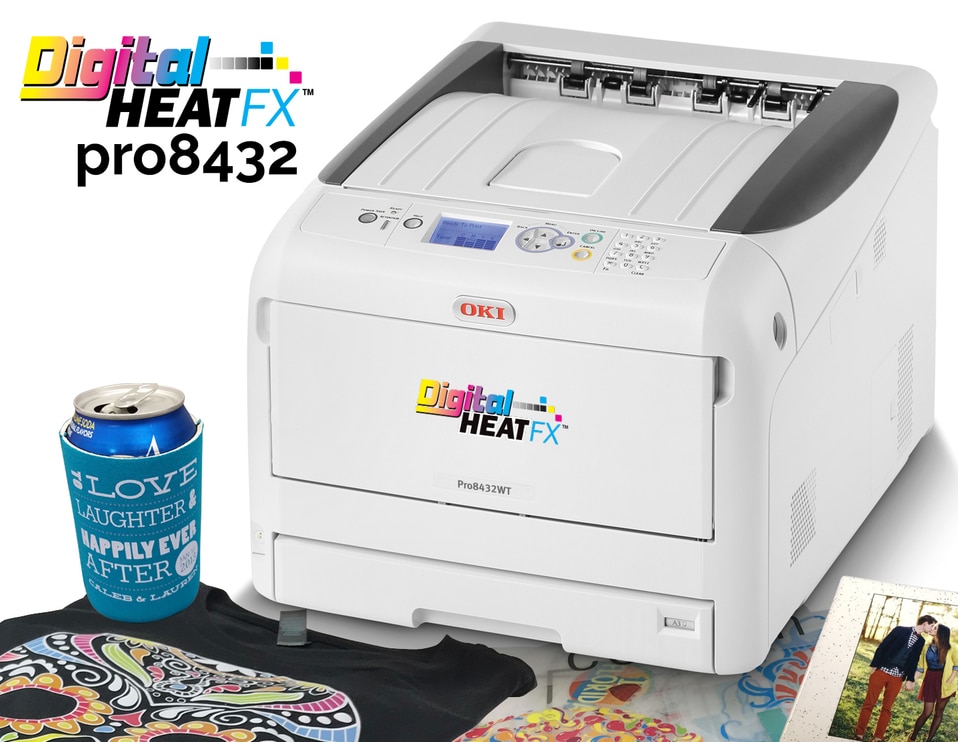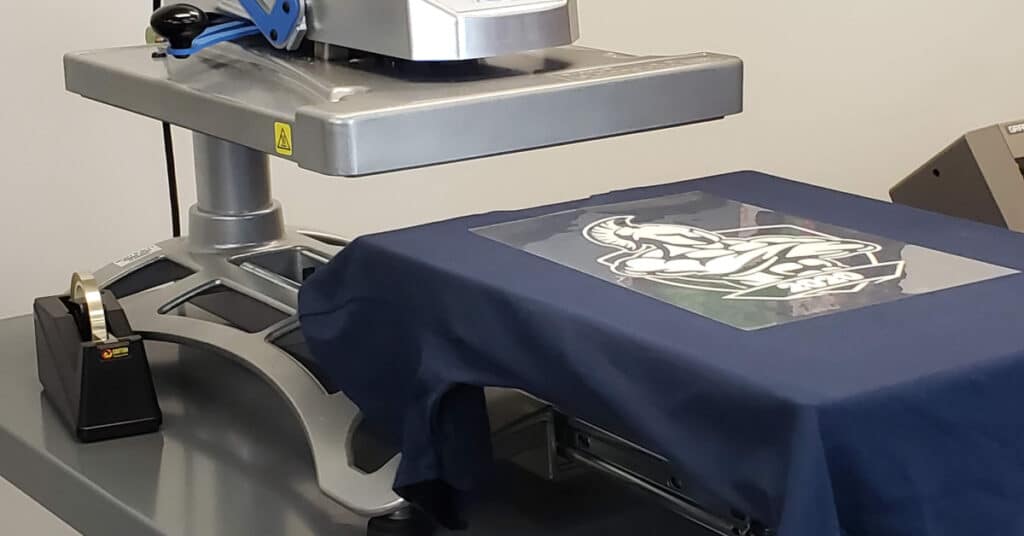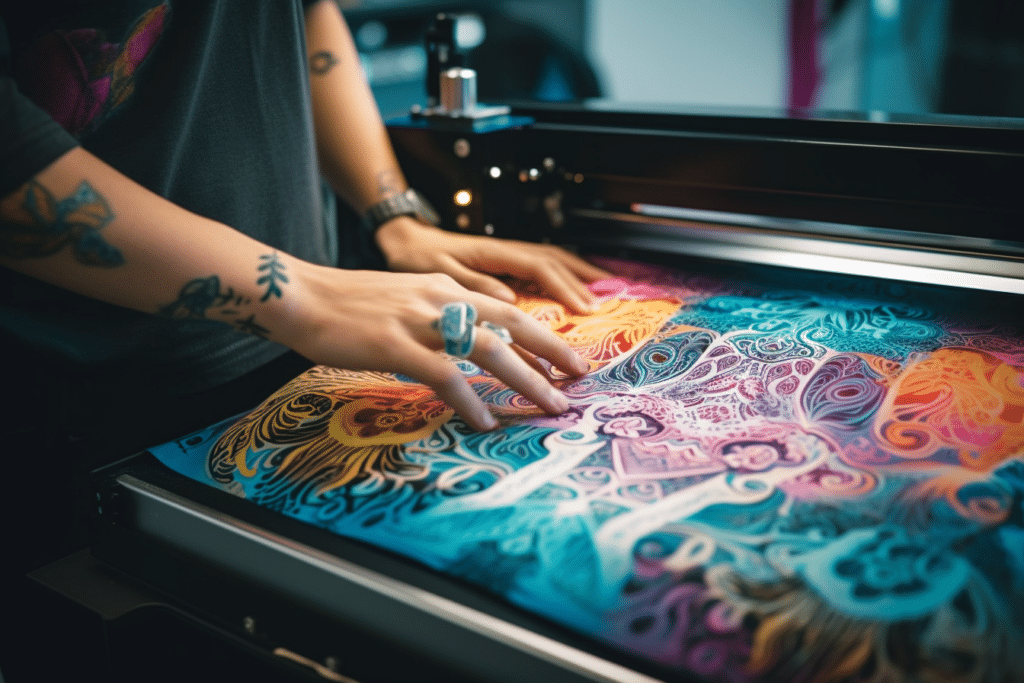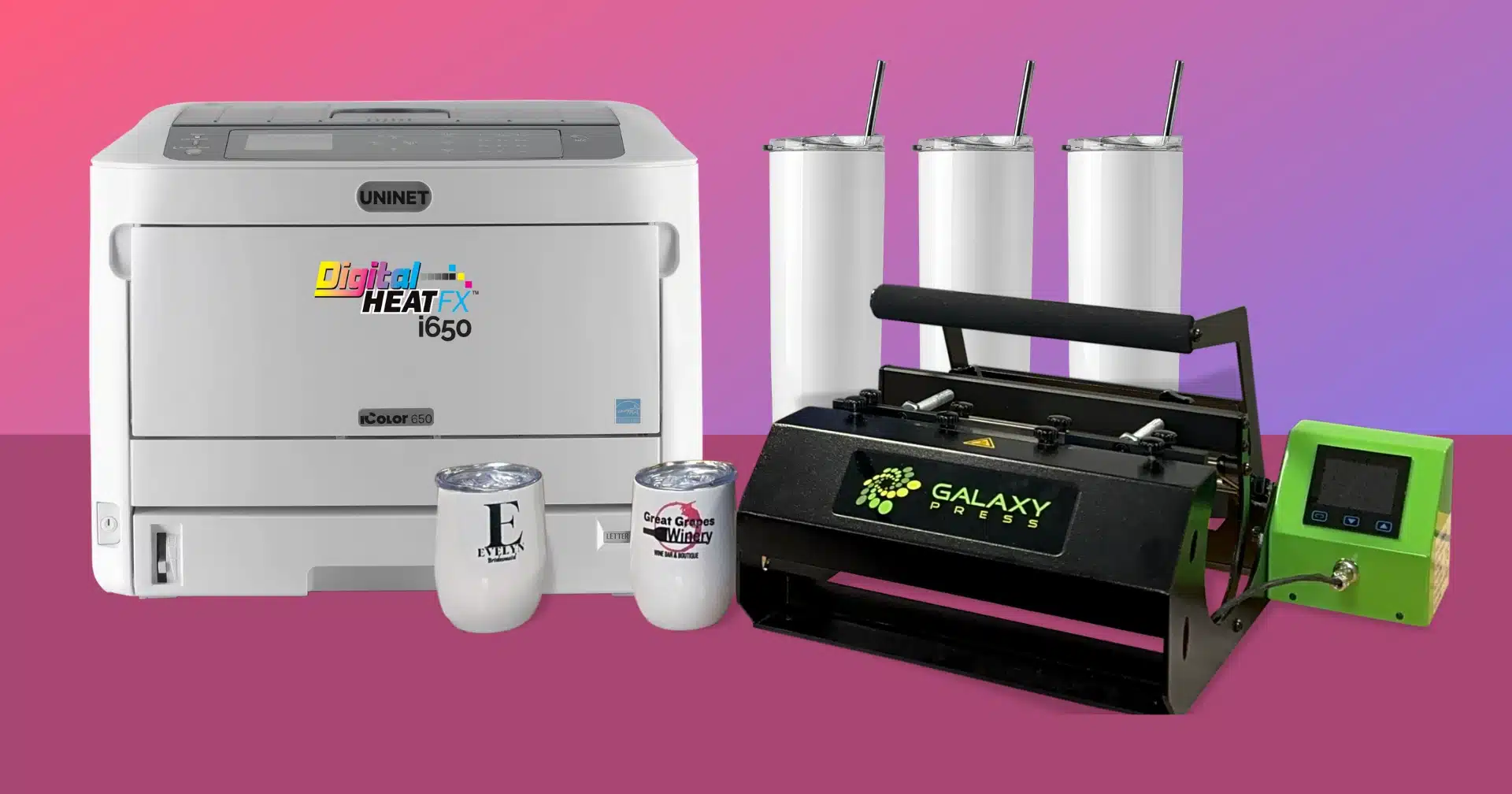Create custom t-shirts with ease! Our digital heat transfer printer makes it easy to design and print your own shirts in no time.
Digital heat transfer printing is an innovative way to get creative with t-shirt designs. It’s a fast and easy process that doesn’t require any special skills or training. With digital heat transfer printing, you can create custom t-shirts with vibrant colors and detailed images in just minutes.

Whether you’re looking for a unique gift for someone special or want to make a statement at your next event, this technology has made it easier than ever to create personalized apparel. In this article, we’ll take a closer look at how digital heat transfer printing works and what makes it the perfect choice for creating one-of-a-kind t-shirts.
Benefits Of Digital Heat Transfer Printing
Digital heat transfer printing is a great way to produce custom t-shirts quickly and easily. It produces vibrant graphics with a professional finish that won’t crack, peel, or fade over time.
The process also allows for greater accuracy and consistency when printing multiple designs. Additionally, the cost of digital heat transfer printing is in line with other direct-to-garment methods, making it more budget friendly.
And, its less expensive than may other forms printing, like screen printing.
Using this method of printing gives you the freedom to design your own custom apparel without having to rely on outside vendors. You can create unique designs that are tailored to your specific needs and preferences, ensuring that everyone who wears your t-shirts will be pleased with the results. Plus, since digital heat transfer is a fast process, you can have your garments ready in no time!
Choosing The Right Heat Transfer Printer
Digital heat transfer printing is a great way to create unique t-shirt designs with vibrant colors and sharp detail. It’s also an efficient and cost-effective way to print multiple shirts quickly. With so many advantages, it’s no surprise that this method of printing has become popular with both businesses and individuals. The Flagship model Printer is the DigitalHeat FX pro8432.
When selecting a digital heat transfer printer, it’s important to consider the size of the prints you want to produce, as well as the number of shirts you want to print at once. You should also keep in mind the type of materials you’ll be using for your projects.
Also look out for good quality heat transfer papers.
Look for a printer that offers adjustable settings so you can customize your design according to the fabric or material being printed on. Additionally, some printers are designed for larger projects and can handle higher volumes of prints at once, saving time and money in the long run. Make sure to read reviews about various models before making your purchase.
Preparing Your Design For Printing
Creating a great design for your t-shirt is an important part of the process. It requires a bit of planning, but with the right tools and knowledge, you can easily come up with something that looks fantastic on your shirt. To get started, you’ll need to have a good idea of what you want the design to look like. Think about colors, fonts, shapes, and layouts that will work together to create something eye-catching.
You also need to consider the size of your design and how it will fit on your shirt. For digital heat transfer printing, it’s best to keep designs relatively small so they don’t overwhelm the material or appear stretched out. When you’re done designing, make sure to save it in either PDF or PNG format so that it’s ready for printing!

Applying The Transfer To Your T-Shirt
Once the transfer is printed, it’s time to apply it to your t-shirt. First, make sure that the t-shirt is clean and free of any dirt or other particles. Lay the shirt flat on a clean surface and pre-heat your iron to the setting recommended for your fabric type. Place the transfer onto the shirt in the desired position, then cover it with a sheet of parchment paper. Press firmly with your iron for 10-20 seconds. Remove the parchment paper and check. If all parts of the design have been transferred from the paper onto the shirt. If not, give it another press for a few more seconds. Once you’ve got your design transferred fully onto your t-shirt your good. Then, let it cool for about 15 minutes before wearing or washing it. Finally, enjoy your customised t-shirt!
Caring For Your Custom Printed T-Shirts
Now that you have your custom printed t-shirts, it is important to take care of them. Start off by washing the shirts in cold water with a mild detergent. Avoid using bleach or fabric softener, as these may damage the print and cause fading. After washing, hang dry or tumble dry on low heat. Direct sunlight should be avoided to prevent any further fading. Ironing should also be done inside out on low heat; never iron directly over the printed area. With proper care and maintenance, your custom printed t-shirts will last for years to come!
Frequently Asked Questions
What Is The Cost Of A Digital Heat Transfer Printer?
The cost of a digital heat transfer printer can vary depending on the type and features you are looking for. Prices range from low-cost models that start at around $30. You can also go up to more expensive models with advanced features that can cost upwards of $2,000. It’s important to assess your needs and budget before deciding which type of printer is best for you.
Is Digital Heat Transfer Printing Durable?
Digital heat transfer printing is known to be a durable form of printing. It works by transferring a design onto fabric using heat and pressure, meaning that the design will not crack or fade. This makes it ideal for t-shirts, bags, and other garments that need to withstand regular wear and tear. Furthermore, the colors remain vibrant after many washes, making digital heat transfer prints long-lasting.
How Long Does It Take To Print A T-Shirt Using A Digital Heat Transfer Printer?
Printing a t-shirt using digital heat transfer can take anywhere from minutes to hours. That’s depending on the complexity of the design and the number of colors used. It’s important to note that multiple passes may be necessary in order to achieve good coverage. So complex designs can take significantly longer than simpler ones.
What Type Of T-Shirts Can Be Printed With A Digital Heat Transfer Printer?
With a digital heat transfer printer, you can print images and designs onto a variety of t-shirts. Cotton and polyester fabrics are the most popular choices for printing, since they both absorb the ink well. You can also print onto other materials such as nylon, rayon, and spandex, although these fabrics may require special inks or coatings to ensure that the print will stay. The type of image you want to print will determine what kind of fabric is best for your project.
What Are The Environmental Impacts Of Digital Heat Transfer Printing?

Digital heat transfer printing only has a small impact on the environment. While It produces minor volatile organic compounds (VOCs), it does not require the use of chemical solvents that can damage ecosystems. Heat transfer printing also generates minimum waste in the form of paper. Also, plastic, and fabric scraps that must be disposed of properly in order to avoid environmental harm.
Additionally, the process itself is relatively low energy. That’s compared to say screen printing, resulting in a smaller carbon footprint than other forms of printing.
Conclusion
In conclusion, digital heat transfer printing is a great way to make custom t-shirts quickly and economically. The cost of a digital heat transfer printer is reasonable, and it’s a durable option for creating t-shirts. It only takes minutes to print a t-shirt with this method, so you can create unique designs for yourself or your business in no time.
Plus, you can print on any type of t-shirt fabric, making it easy to design shirts for any occasion. Finally, digital heat transfer printing has minimal environmental impacts, making it a sustainable choice for printing custom t-shirts. All in all, digital heat transfer printing is an efficient and eco-friendly way to create one-of-a-kind t-shirts.






